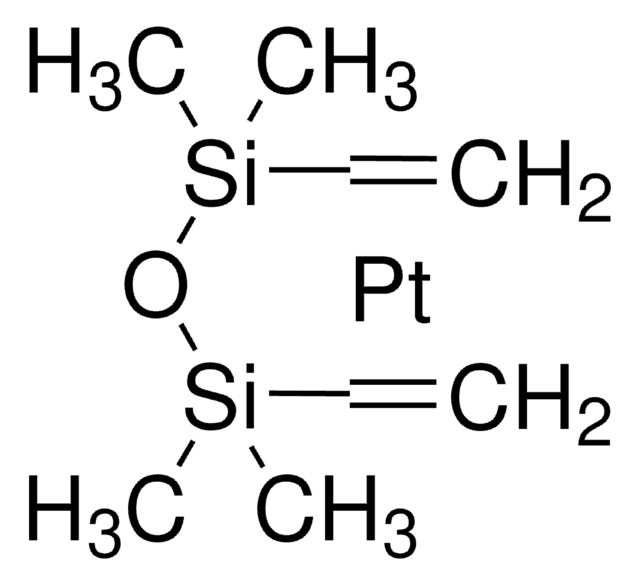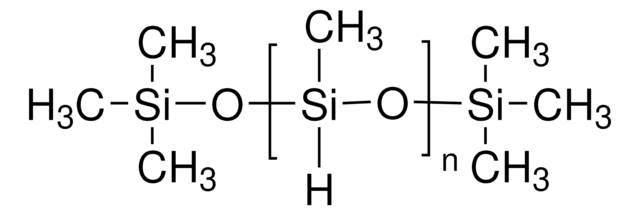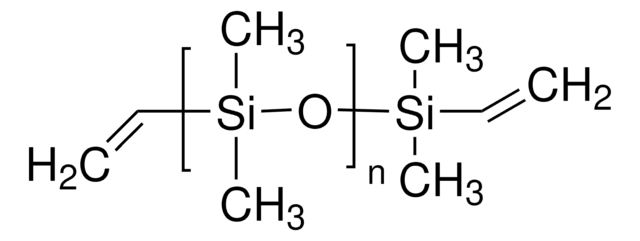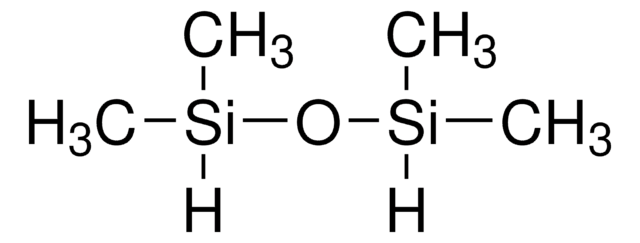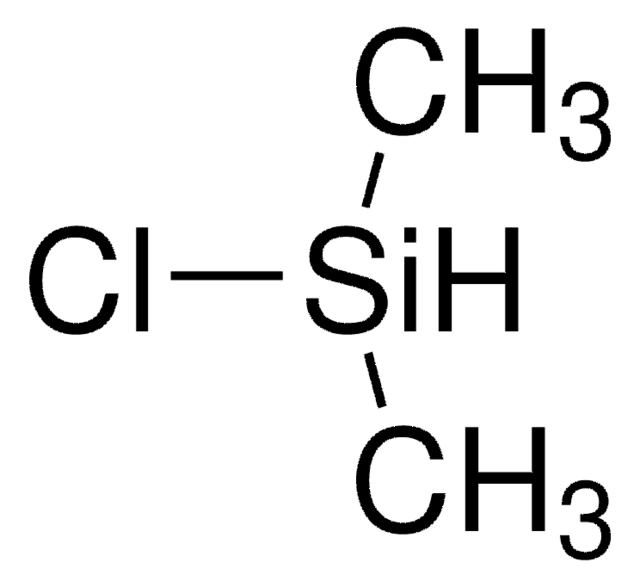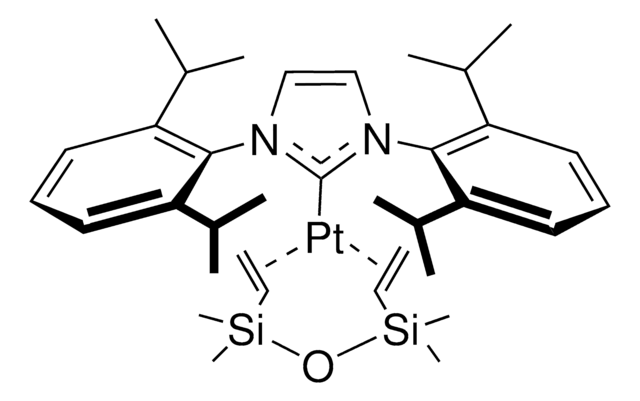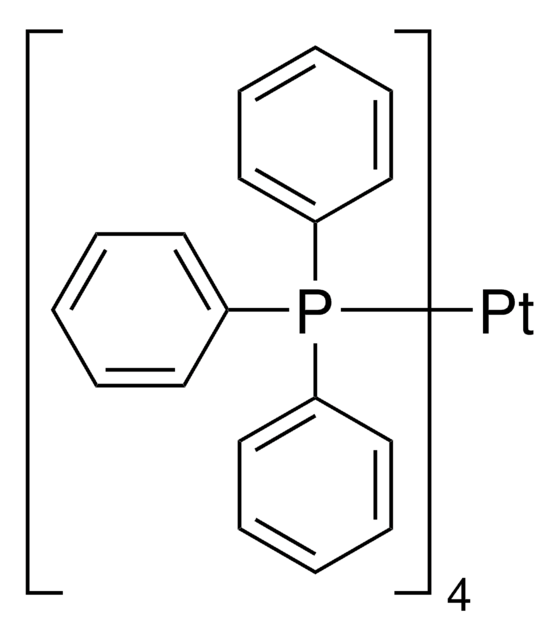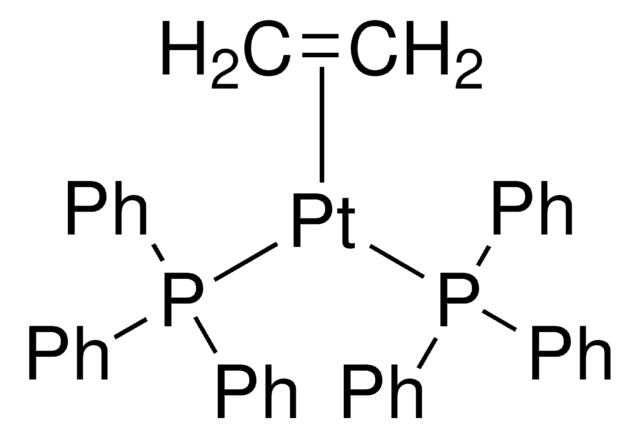479519
Platinum(0)-1,3-divinyl-1,1,3,3-tetramethyldisiloxane complex solution
in xylene, Pt ~2 %
Synonym(s):
Karstedt′s catalyst, Platinum(0) 1,3-diethenyl-1,1,3,3-tetramethyldisiloxane complexes
About This Item
Recommended Products
vapor pressure
7 mmHg ( 21 °C)
Quality Level
composition
Pt, ~2%
reaction suitability
core: platinum
reagent type: catalyst
concentration
in xylene
bp
138 °C
mp
12-13 °C
density
0.855 g/mL at 25 °C
SMILES string
[Pt].C[Si](C)(O[Si](C)(C)C=C)C=C
InChI
1S/C8H18OSi2.Pt/c1-7-10(3,4)9-11(5,6)8-2;/h7-8H,1-2H2,3-6H3;
InChI key
RCNRJBWHLARWRP-UHFFFAOYSA-N
Looking for similar products? Visit Product Comparison Guide
General description
Application
It has also been used in the reduction of carboxamides to amines.
Signal Word
Danger
Hazard Statements
Precautionary Statements
Hazard Classifications
Acute Tox. 4 Dermal - Acute Tox. 4 Inhalation - Aquatic Chronic 3 - Asp. Tox. 1 - Eye Irrit. 2 - Flam. Liq. 3 - Skin Irrit. 2 - STOT RE 2 Inhalation - STOT SE 3
Target Organs
Central nervous system,Liver,Kidney, Respiratory system
Storage Class Code
3 - Flammable liquids
WGK
WGK 3
Flash Point(F)
77.0 °F - closed cup
Flash Point(C)
25 °C - closed cup
Choose from one of the most recent versions:
Already Own This Product?
Find documentation for the products that you have recently purchased in the Document Library.
Customers Also Viewed
Articles
Vinyl-metal reagents play a pivotal role in organic synthesis. Among the vinyl-metal reagents available, silicon-based reagents are of increasing importance. This is largely due to their low cost, minimal toxicity, ease of handling, and the simplicity of byproduct removal.
A Highly Efficient Hydrosilylation Catalyst, sigma-aldrich is pleased to offer [Cp*Ru(MeCN)3]PF6, as well as a number of other catalysts for hydrosilylation.
Our team of scientists has experience in all areas of research including Life Science, Material Science, Chemical Synthesis, Chromatography, Analytical and many others.
Contact Technical Service